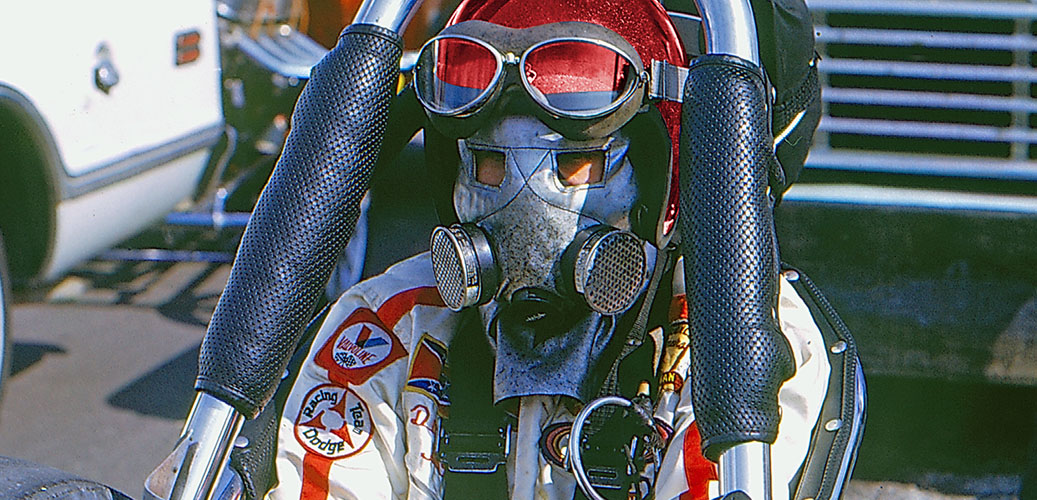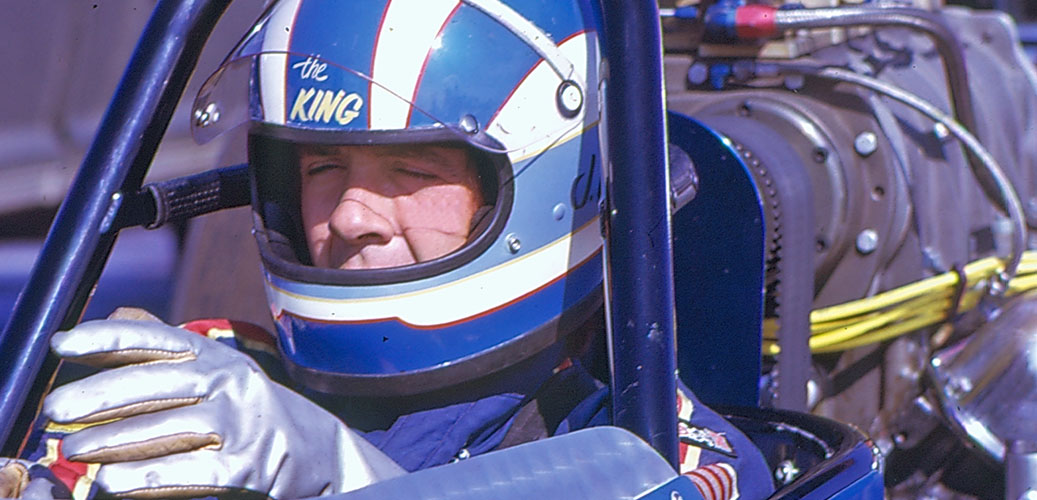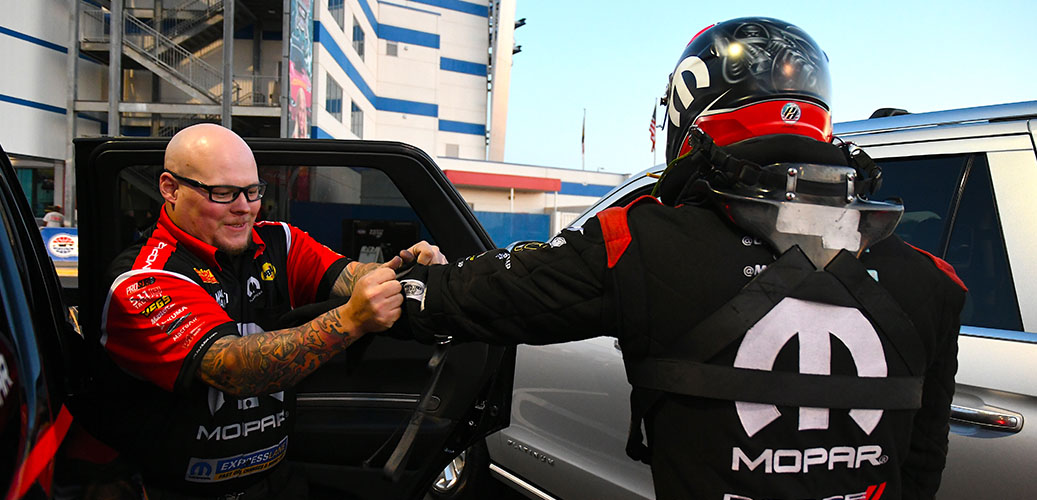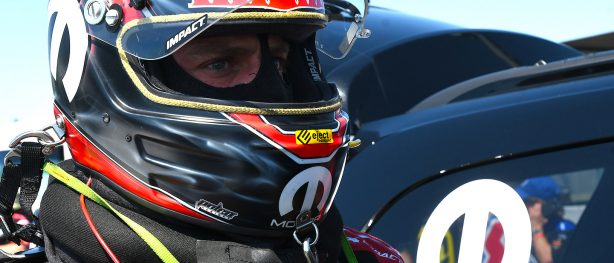THERE’S SAFETY BEHIND THE FASHION
Colors, fabrics and styles may change; but watch any auto race and it is rather clear how much emphasis is built around driver safety. It wasn’t always this way. In fact, over the last 100 years of racing, safety equipment has only been a focal point for the past 50.
THE LEATHER ERA (1901-1941)
The post-World War II era was the turning point for safety in the sport. Technical advancements made during wartime, as well as the number of paved facilities that were now available, created a major increase in the interest in auto racing. It also allowed for more diverse types of racing to develop around the world.
From drag racing, to dirt or paved oval track racing, and even to road racing, the human interest that surrounded the sport garnered the attention of entrepreneurs and allowed the sport to develop into a business. Enter the onset of NHRA, NASCAR, Formula 1, USAC; as these organizations grew their businesses, the element of safety became a priority.
Between 1901 and 1941, driver safety wasn’t considered or developed in auto racing. The drivers wore leather helmets and often could be seen in short-sleeve cotton shirts (with the idea that staying cool was more important than protecting oneself).

SAVING FACE (1942-1970s)
Soon, drivers became public figures, a fan base developed and technology continued its forward movement; so, naturally, advancements in safety began to unfold.
The first wave of technology to be seen in motorsports gear was the introduction of closefaced helmets, which replaced the open-face style previously worn. This new style protected drivers from debris that would kick up into their faces.
In 1954, Bell Sports introduced the first mass-produced full-face helmet. The helmet was not initially adopted by all drivers, as it was thought that it limited peripheral views. But, by the early 1970s, drivers participated in all forms of motorsports (with the exception of enclosed pavement racecars, like stock car, sports car, touring car, rally car, etc.) adopting the use of full-face helmet.
Just as this development was a major positive for drivers, so too was the period in the late 1960s – a time where driver apparel made significant evolutions in safety.
An early pioneer in fire-resistant/fireproof apparel was Bill Simpson. After developing a parachhute system for drag racing in the late ’50s, Simpson was asked to assist NASA on a system for the space capsules returning to Earth. It was at this time that Simpson was introduced to Nomex®, a fire-resistant material developed by DuPontTM for NASA. With this material, Simpson went back to the racetrack in 1967 to introduce the concept of drivers wearing Simpson fire-resistant suit. It was a hit. In the 1967 Indy 500, Simpson had 30 of the 33 drivers wearing his suits. In addition, Simpson and others in the industry also developed gloves and shoes made of Nomex® to assist in driver safety.

TRAGEDY LEADS TO INNOVATION (1970-PRESENT)
Technology advanced in the ’70s and big business dollars fueled research and development in racing. Safety, speed and driver comfort advancements evolved as well.
The 1970s through the 1990s saw an effort to make safety gear lighter and more protective. One major development during this time was Dr. Robert Hubbard’s introduction of the Head and Neck Safety System (HANS).
During the 1980s, Dr. Hubbard was a biomechanical engineer at Michigan State University. He was introduced to the sport by his brother-in-law, Jim Downing, who was a racer. Sadly, a mutual friend perished in a sports car testing accident.
Hubbard and Downing realized that their friend’s death was attributed to the force of a sudden stop, brought on by the tension of the seatbelt. To prevent or minimize future injuries or deaths from this type of trauma, they developed what is known as the HANS device: a collar laid on the driver’s shoulders underneath the seatbelt. The straps from the device are connected to the helmet to limit the movement of the neck forward.
The original design, developed in 1985, has been evolved to be lighter and more comfortable. Its importance was revisited in 2001, following the tragic death of Dale Earnhardt Sr.
Up to the time, motorsports had seen a number of deaths from these types of skull fractures all around the world. Earnhardt’s death was a pivitol point in mass adoption of the HANS device in all forms of auto racing. Following Earnhardt’s death, the motorsports industry worked in conjunction with the HANS Company to mandate the use of the HANS device. They succeeded in 2004. For almost 15 years, the HANS device has been mandated in nearly every form of motorsports.
The contributions of many pioneers and numerous technologies have made auto racing a much safer activity in which to participate. The measures that have been taken to improve equipment like the helmets they wear, the suits they put on and the gear that straps them in have truly made the sport safer for the drivers and more enjoyable for the fans.

“When I started driving in the sixties, we drove in cotton suits dipped in a fireproof liquid. We wore leather gloves, leather shoes and open-face helmets. There was very little protecting us from fire or other dangers. The late sixties and early seventies saw companies like Simpson and DEIST develop a number of new products that included Nomex®. We also saw the evolution to full-face protection on the helmets with breathers. The importance of safety for the drivers cannot be understated. When I returned to the sport with my son Tony, many new advances in safety had occurred. Now we have things like the HANS device that have continued to make the drivers safer. For my part, we at DSR have developed a canopy system for our Top Fuel dragsters so that the driver compartment is even safer. We have also worked to expand the protection for our Funny Car driver with Kevlar®/carbon panels that aid in protection if there is an explosion. I think that all of these advances allow the driver to be more focused on driving the car, which is another good thing for the sport.” – Don Schumacher
